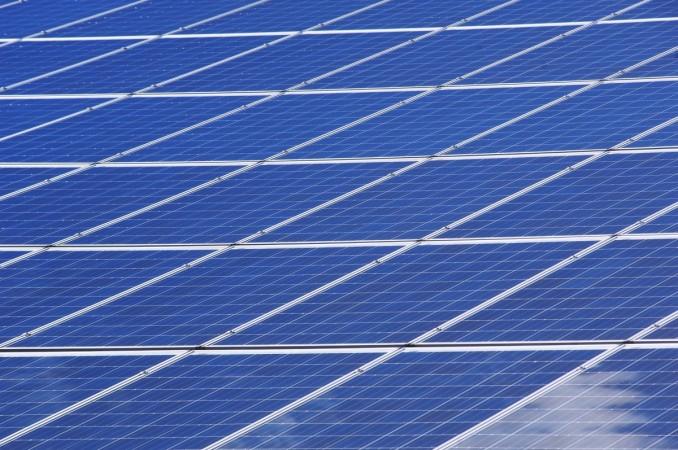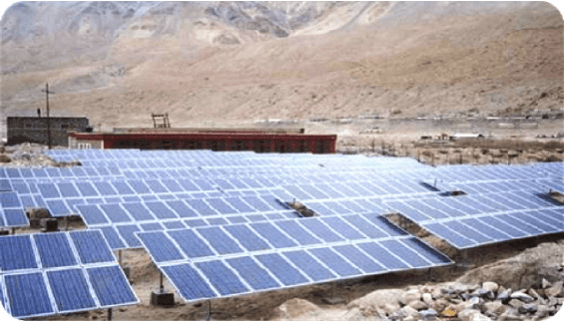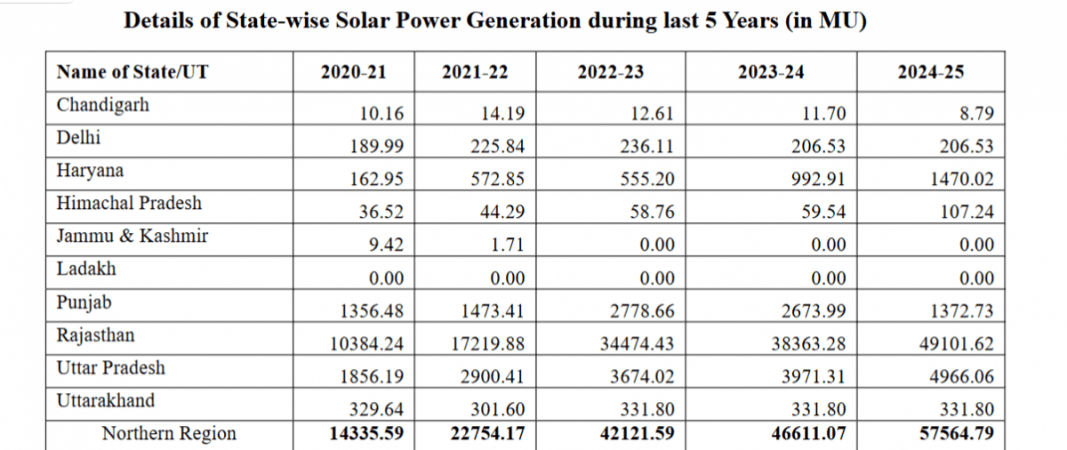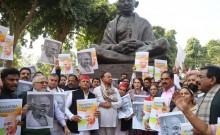
Although the Union Territory of Ladakh has been touted as the "solar capital" of India, the mountainous region has failed to generate even a single unit of solar power in the last five years.
As per data tabled in the Rajya Sabha, not even one unit of solar energy has been produced in Ladakh—despite its vast potential and highly favourable climatic conditions.
Known as the cold desert of India, the mountainous region of Ladakh possesses immense potential for solar energy generation due to its abundant sunshine and vast stretches of open land.
The region receives more solar radiation than any other part of the country, making it ideal for solar power projects.
The government has aimed to leverage this advantage by developing large-scale solar power plants, including what was proposed to be India's largest solar park with a capacity of 13 GW.
This information was disclosed by Union Minister for New and Renewable Energy, Shripad Yesso Naik, in response to a question raised by Telugu Desam Party (TDP) Rajya Sabha MP Sana Sathish Babu.

It is important to mention that the Union Government has repeatedly expressed its intent to tap into Ladakh's renewable energy potential.
Flagship schemes such as the PM-Surya Ghar Muft Bijli Yojana—which aims to provide up to 300 units of free electricity per month to one crore households through rooftop solar panels—and initiatives for developing ultra-mega solar parks have made little progress in both Ladakh and Jammu & Kashmir.
Ladakh, with an estimated solar energy potential of over 13 GW, was expected to play a key role in India's green energy roadmap.
The region was sanctioned two mega solar projects—later revised to a total capacity of 10,000 MW. However, as of June 2025, not a single unit of electricity has been generated from these projects.
Situated in the high-altitude region of the Himalayas, Ladakh is known for its harsh winters and scant rainfall. However, this desolate cold desert harbours a significant untapped resource: its extraordinary solar potential.

With over 300 sunny days a year, Ladakh is ideally positioned to transform its extreme climate into a major renewable energy asset.
The Solar Energy Corporation of India (SECI) had floated tenders in December 2018 for the development of solar projects in Leh and Kargil, with a stipulated completion period of 48 months. Despite project approvals and the availability of funds, implementation appears to have stalled.
Meanwhile, the government has introduced other major initiatives, such as the National Programme on High-Efficiency Solar PV Modules under the Production Linked Incentive (PLI) scheme and the PM-KUSUM scheme, aimed at decentralizing solar energy generation for agriculture.
Under PM-KUSUM Component C, Andhra Pradesh was allocated 1 lakh solar pumps and has issued Letters of Award (LOAs) for 470 MW, although installation remains pending.
Reports indicate that the lack of tangible results in both Ladakh and Jammu & Kashmir underscores deep-seated implementation gaps and bureaucratic inertia that continue to obstruct India's ambitious renewable energy targets.









